The physical exam refers to a process in which a patient undergoes a clinical test for the effective diagnosis of a possible medical condition. During the exam, the person is first asked some questions and information about their medical history. Then, their symptoms are examined to interpret their condition better and prescribe a suitable treatment.
Conducting regular medical evaluations of your patients not only enables you to monitor their health but also ensures individuals lead a good life. So, if you want to prepare a well-organized patient’s profile and manage their health statistics better, refer to any of these physical exam templates or forms.
Free Download Physical Exam Templates
Are you running out of ideas regarding what components your clinical exam should consist of? Here are some guides and sample documents that you can take inspiration from. They offer a holistic approach to treating your patients by modifying some elements as and when needed. Hence, these forms are available in editable Word and PDF format.
Normal Physical Exam Template for a Male or Female
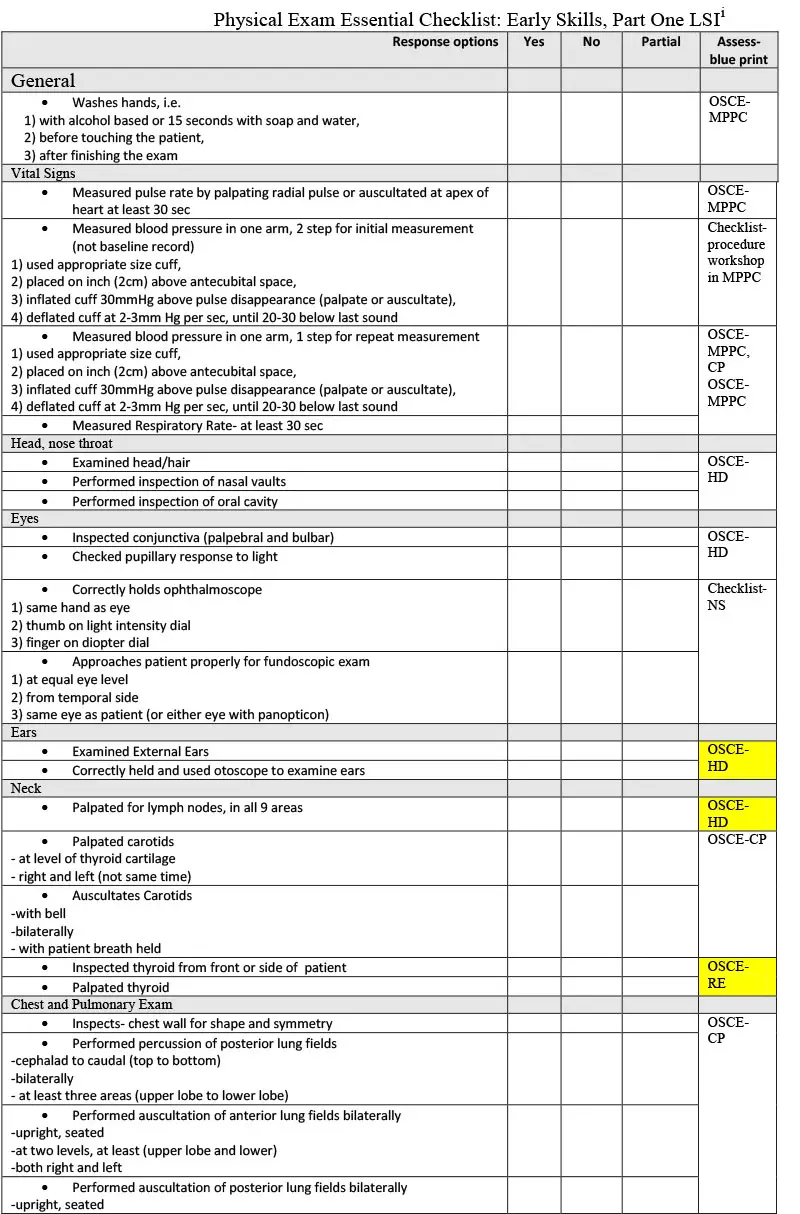
Regardless of one’s gender, taking a medical examination is necessary to check if there are any underlying health conditions. So, you must consider various aspects in their clinical exams. To ease the process, here are some physical exam guides for a male or female that include their medical, personal, family, social, and baseline functional history and lifestyle choices.
They also cover the vital signs and information of an individual’s heart, lungs, head, neck, abdomen, spine, skin, eyes, nose, ears, and throat. Using such a form, you can easily record the results of their performed cardiac, neurological, extremity, musculoskeletal, peripheral vascular, and pulmonary exams.
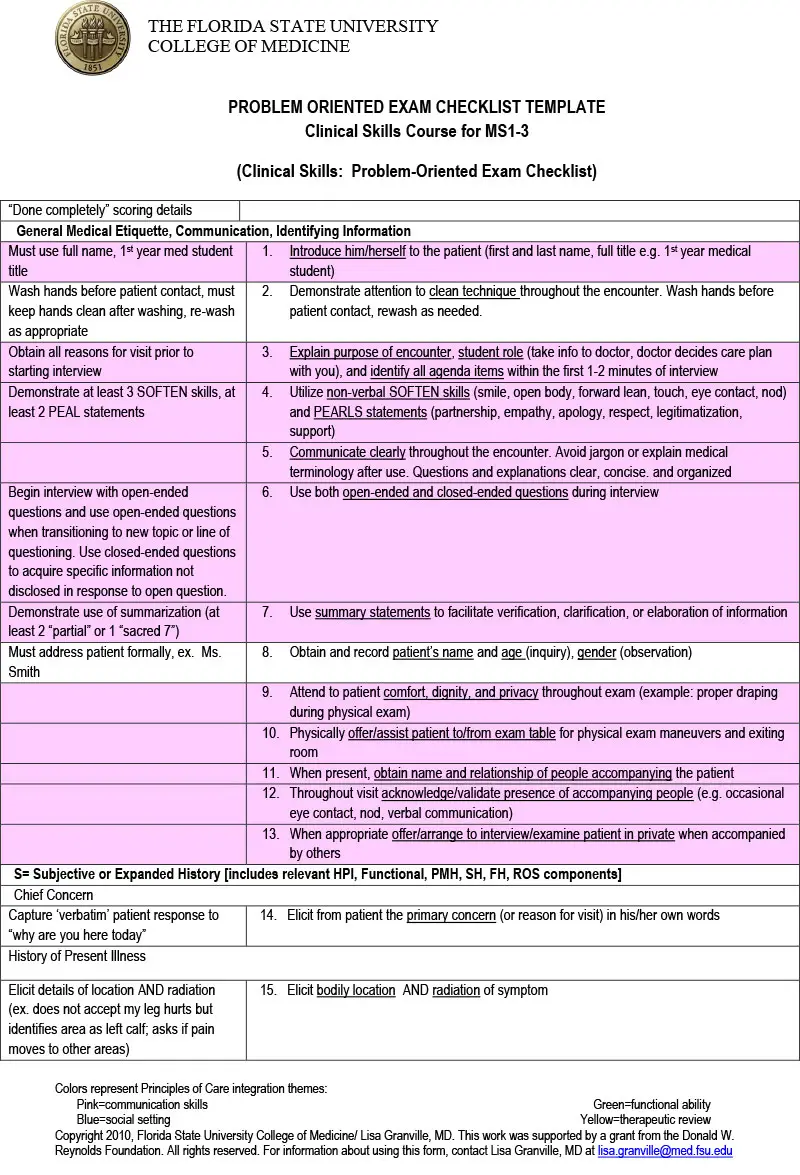
For Ob-Gyn
Conducting a medical examination of individuals in Obstetrics and Gynaecology can be challenging. Many processes, such as measuring the patient’s weight, checking their blood pressure, assessing their lifestyle, etc., need to be followed step by step.
These Ob-Gyn samples come with all the necessary components for the diagnosis, including the victim’s family history, GYN history, medical history, sexual history, general physical exam, breast exam, pelvic exam, and STD tests. They may also comprise labor, delivery, C-section, TAH/BSO, and postpartum details to help you assess the patient’s gynecological condition and suggest a care plan accordingly.
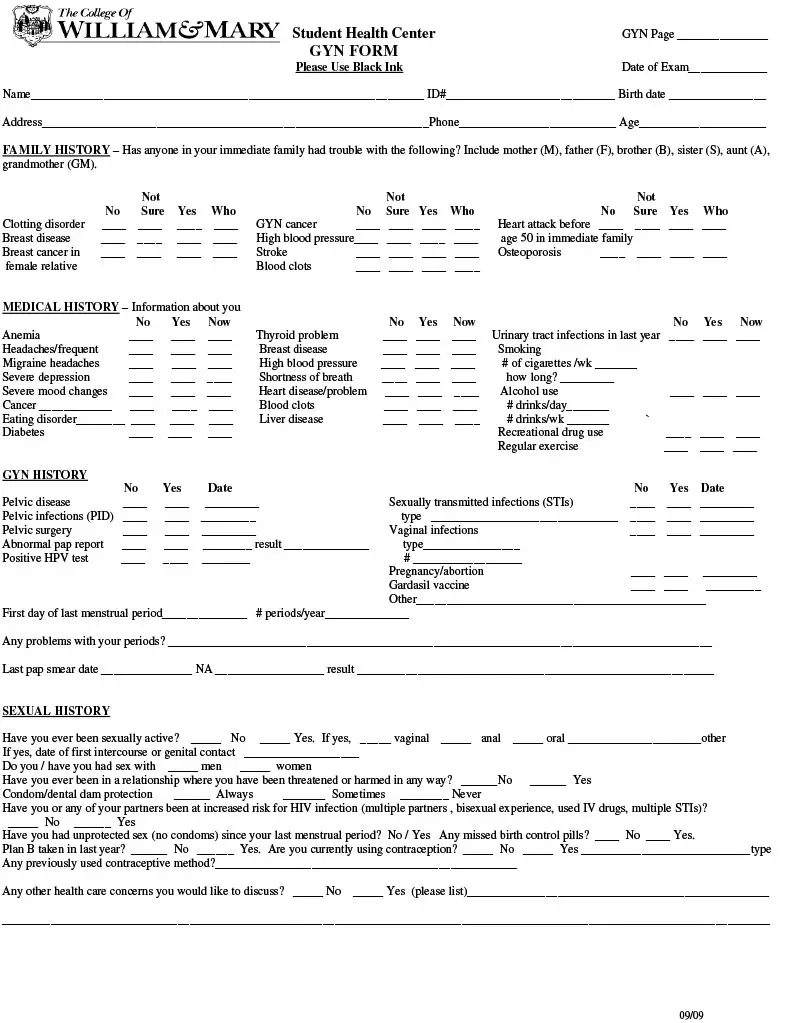
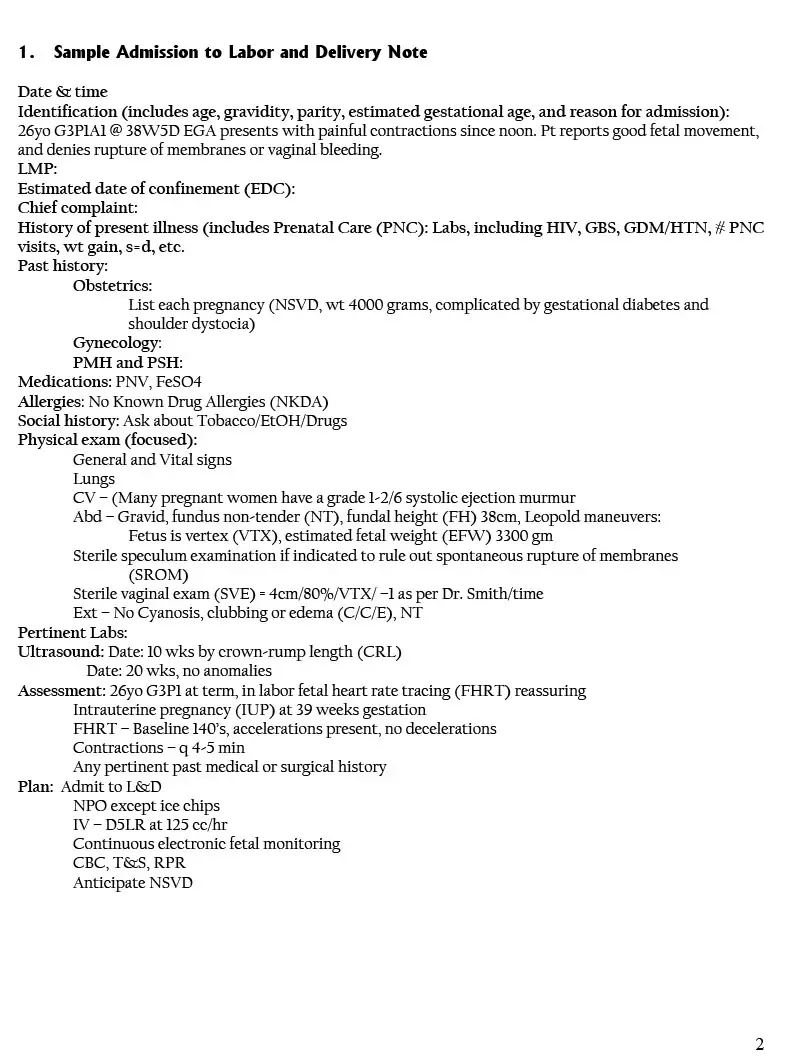
For a Newborn
It is mandatory to perform medical check-ups of a newborn at regular intervals to maintain their well-being. But while diagnosing a baby, you must know how to approach the child, observe them, and follow the correct exam sequence.
Thus, these physical exam templates for a newborn cover all critical factors, such as their present and past medical history, birth and developmental history, feeding habits, family and social history, environmental factors, and system review.
You can also sequentially note down information about their vital signs, general appearance, skin, head, face, ears, eyes, nose, neck, mouth, throat, lymph nodes, heart, lungs, musculoskeletal, neurologic, abdomen, spine, genitalia, anus, rectum, and extremities, in these forms, for their better health evaluation and care.
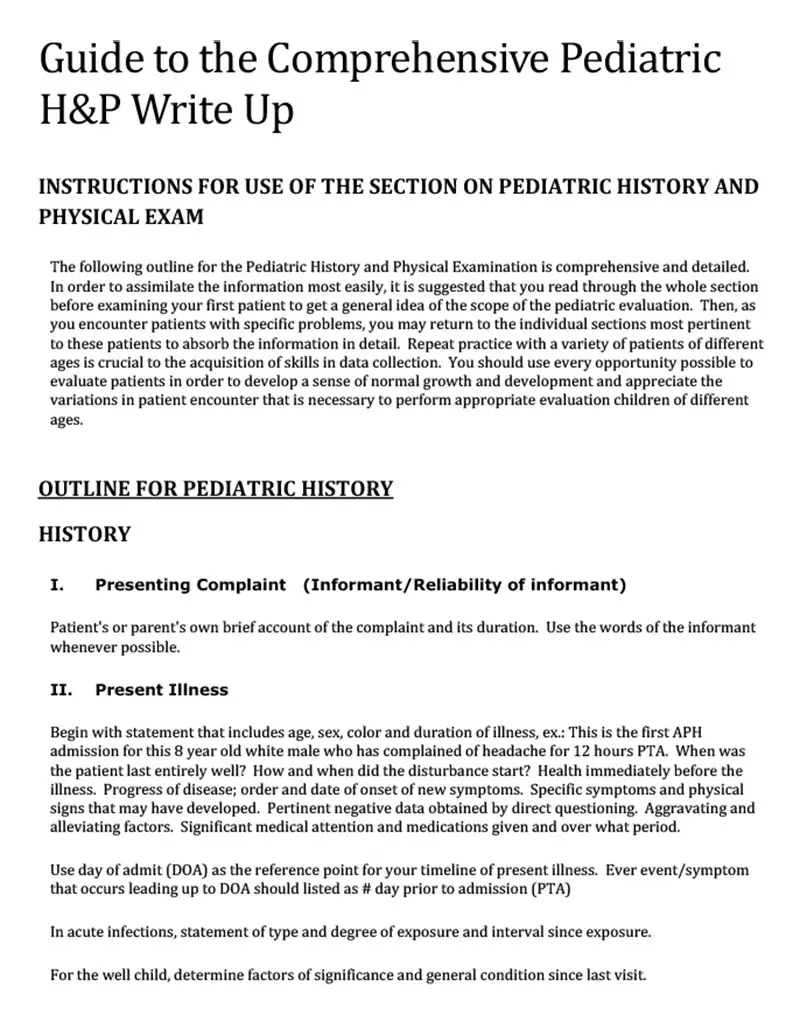
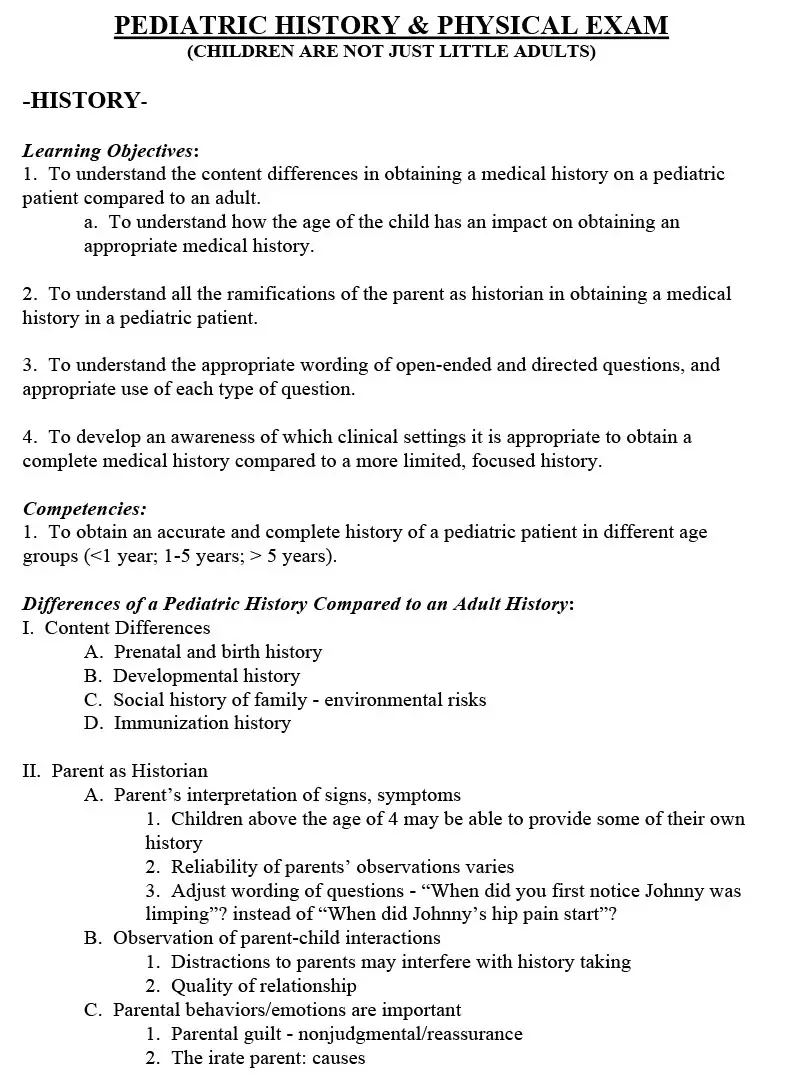
For a Virtual/Telemedicine Exam
These days, digitization is taking over the world, and its influence can be seen in the medical industry too. So now, a virtual health exam has become something physicians need to be skilled at. For a successful online physical evaluation, you can refer to this sample.
Following the 1995 CMS coding guidelines, this document addresses the major components that need to be covered in the virtual medical examination, such as the patient’s vitals, general appearance, respiratory health, male GU, female GU, CV, GI, psych, etc.
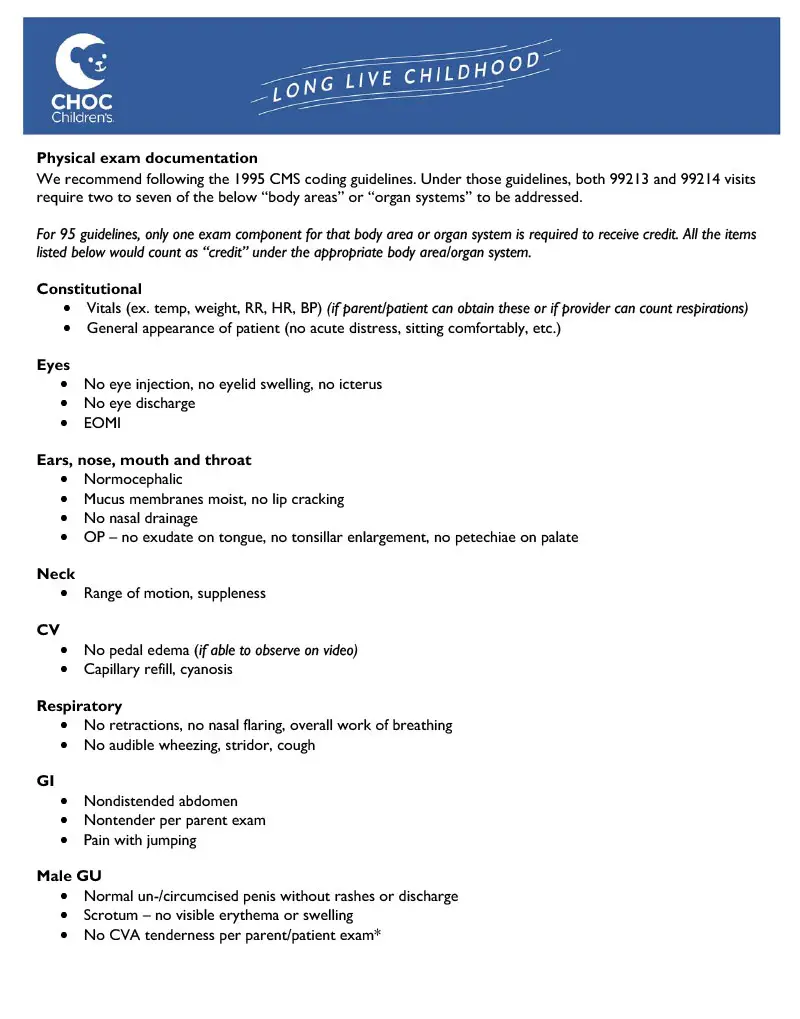
Components of A Physical Exam
Despite the growing use of technology in medical diagnosis, physical assessment is equally necessary to check an individual’s health. The evaluation relies on the information gained through the patient’s spoken word and the findings from their clinical examinations.
To ensure that the diagnosis is performed successfully without leaving the tiniest details, referring to a physical exam template is recommended. It consists of crucial components, as stated below.
1. Inspection
Inspection refers to observing the body of a patient. As a doctor, you should perform this step to determine if the individual has any possible medical issues or health risks and ensure that they are physically fit. It is the first phase of the physical evaluation process.
2. Palpation
In palpation, you need to check the abnormalities of the sufferer by using your hands to assess their health. It will help determine their body part or organ’s consistency, size, tenderness, location, and texture.
The most common body parts to be checked during palpation are the patient’s abdomen, lymph nodes, and chest wall to check the heartbeat. This step is also done to examine the possibility of any lumps or masses in their body.
3. Percussion
Percussion involves using hands too, but in this process, you need to tap on the victim’s body parts like their chest wall, back, or abdomen to determine the type of sounds they produce.
It will enable you to check if there is the presence of fluids or mass in their lungs or stomach. In this way, you can also find more clues through percussion to perform an accurate diagnosis.
4. Auscultation
In auscultation, you’ll have to listen to the patient’s lungs, abdomen, neck, and heart attentively to diagnose if there are any problems. Perform this step using a stethoscope to amplify the sound heard in these areas.
You need to listen to different sounds in different body parts, as stated below.
- Neck: You’ll usually come across a “swishing” sound in the arteries of the neck area.
- Lungs: While checking the chest wall or back of the body, you need to pay close attention to each breath, listening to the airflow to ensure that the air reaches the lungs’ bottom. It is referred to as normal lung sounds.
- Heart: The heart valves open and close during blood flow, producing a “lub-dub” sound. You must listen to the heart to ensure that their heartbeat is regular.
- Abdomen: In the stomach, you may hear a “swishing” sound produced through the arteries.
5. Mensuration
Mensuration refers to measuring the patient’s physical features like height, weight, dimension and depth of an injury, and vital signs to diagnosing a medical condition accurately.
6. Manipulation
After you’ve performed all the above-stated steps, you need to manipulate the affected body part of the victim through manual diagnosis and treatment.
Conclusion
Ensuring one’s health through regular medical check-ups is necessary to maintain a good quality of life. But accurate examination without missing out on the minutest detail is a must. So, taking references from a physical exam template can be helpful for any physician or patient.
References & Sources:






